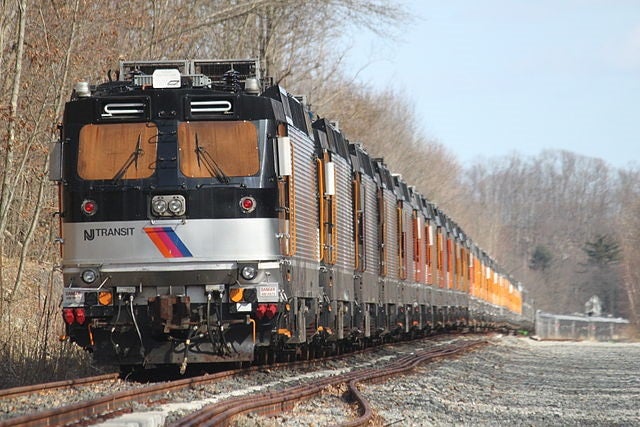Superstorm Sandy crippled much of New Jersey’s critical infrastructure when it swept through the state two years ago. Stuck without power at home, many of the state’s residents also couldn’t get to work because the operations center for New Jersey Transit (NJ Transit) flooded, damaging backup power systems, emergency generation, and the computer system that controls train operations.
New Jersey is doing its best to make sure that won’t happen again. After a highly competitive grant process, NJ Transit last week received $1.3 billion in federal funds to improve the resilience of the state’s transportation system in the event of devastating future storms. The funds include $410 million to develop the NJ TransitGrid into a first-of-its-kind microgrid capable of keeping the power running when the electric grid goes down.
Microgrids are different from traditional electric grids in that they generate electricity on-site or nearby where it’s consumed. They can connect to the larger grid or island themselves and operate independently.
The NJ TransitGrid will not only generate power on-site but will incorporate a range of clean energy technologies such as renewable energy, energy storage, and distributed generation. This microgrid will also allow NJ Transit and Amtrak trains running on Amtrak’s Northeast Corridor, the country’s busiest train line, to keep operating during an outage.
Environmental Defense Fund joined state and federal stakeholders, such as New Jersey Governor’s Office of Recovery and Rebuilding and the U.S. Department of Energy, in the early stages of NJ TransitGrid planning. EDF also wrote a letter in support of New Jersey’s application for the funds from the Federal Transit Administration. [Tweet “.@NJTransit to develop a 1st-of-its-kind microgrid capable of keeping the power running when the grid goes down. http://ow.ly/C54NR “]
The $1.3 billion in total federal funds received by NJ Transit will go toward a range of resiliency and restoration projects across the system, including flood protection, drawbridge replacement, train storage and service restoration, and making train controls more resilient. These funds will also be used to fortify critical Amtrak substations.
Serving almost 900,000 passengers daily, NJ Transit is the third largest transit system in the country connecting travelers to the tri-state area of New York, New Jersey, and Pennsylvania. An independent microgrid for NJ Transit will prepare the state for future extreme weather events, which are happening more frequently due to climate change. Furthermore, the use of clean energy resources will make this microgrid a less polluting and more efficient operation for New Jersey’s day-to-day needs.

3 Comments
Hi Mary – a couple of questions:
1) Have you traveled NJ Transit from Trenton to NYC recently? There appear to be what look like back up generators newly constructed along a long stretch of the eastern side of the track.
Are they diesel powered? Who paid for their construction?
I assume that these are NOT part of the micro-grids you write about.
2) Could you post a link to the EDF letter in support of NJ Transit’s funding application?
3) Was EDF involved in the federally funded Pre-Sandy NJ Transit climate change vulnerability pilot study? Have you read that Report?
4) Does NJ Transit have a climate change mitigation policy?
5) Does NJ Transit have a climate change vulnerability assessment and adaptation plan, along the lines of NYC and MTA?
6) Does EDF have concerns about Gov.’s Christie’s stance on climate change? On his record as Gov. in that regard?
As a long time Trenton based environmental professional, I’m just curious.
Hi Bill, thank you for your thoughtful questions. I will get back to you by email! Mary.
Mary, you write that during Hurricane Sandy
“many of the state’s residents also couldn’t get to work because the operations center for New Jersey Transit (NJ Transit) flooded, damaging backup power systems, emergency generation, and the computer system that controls train operations”
and that this situation will be remedied by installing a system which
“…will not only generate power on-site but will incorporate a range of clean energy technologies such as renewable energy, energy storage, and distributed generation.”
What’s the difference between “emergency generation” and “distributed generation”, or “backup power systems” and “energy storage”? Since solar panels are useless during a hurricane, it sounds like NJ residents are essentially spending $1.3 billion for the right to call their existing system a “microgrid”.